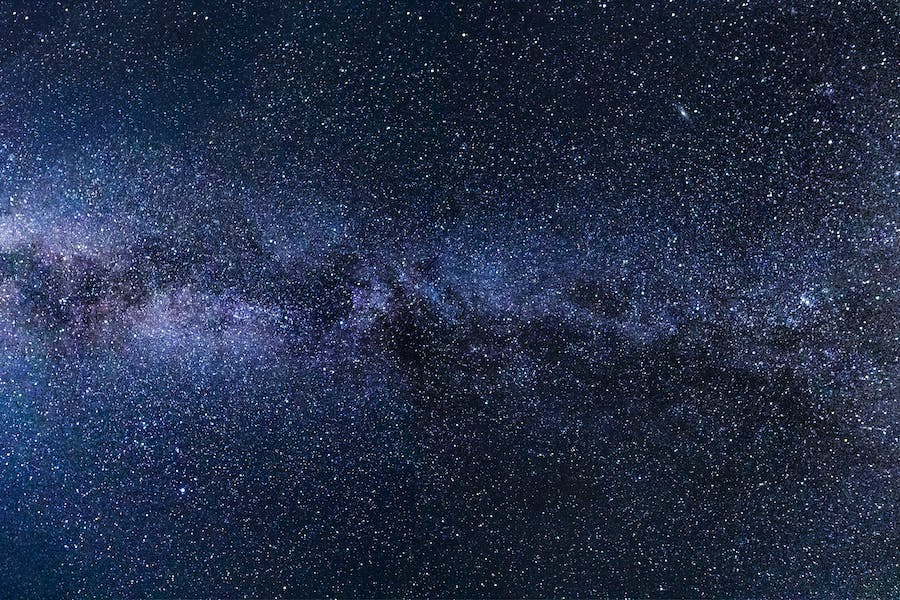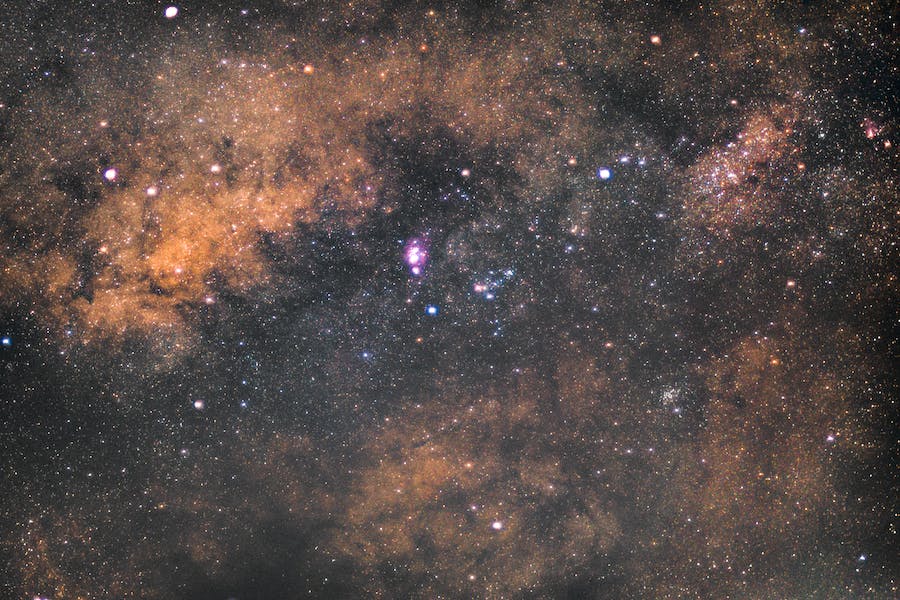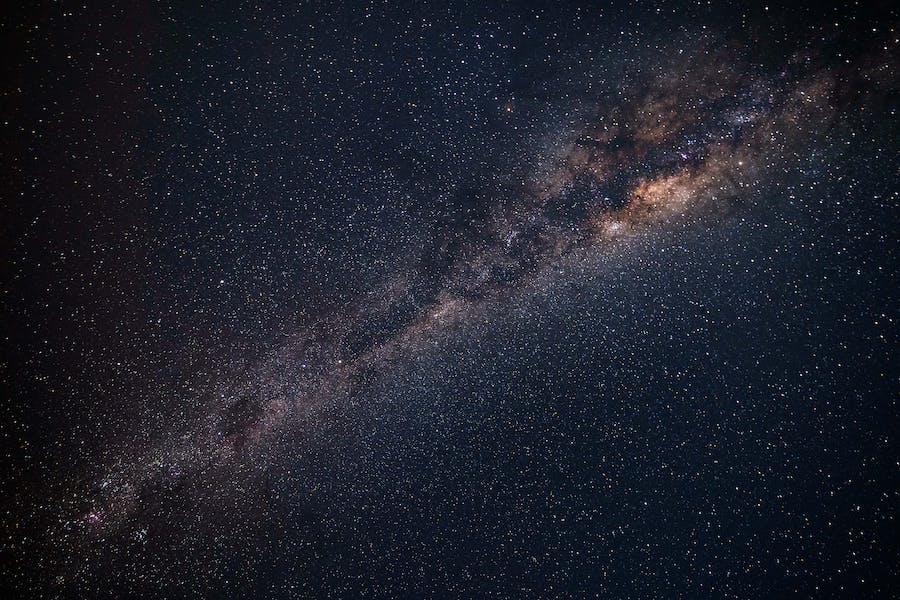In the vast expanse of the cosmos, hidden beyond the reaches of individual galaxies, lies an immense celestial web of unimaginable proportions — the superclusters. These exist like islands floating in the space between galaxies. These epic-sized structures bind hundreds or even thousands of galaxies. But what are superclusters?
We will navigate between theories and observations to better understand the supercluster definition, considered as the apex of cosmic structure. We shall also discover how their structures enlighten our place in the cosmos and what their shapes predict for the most distant space-time horizons.
What Are Superclusters?
Superclusters are vast, interconnected cosmic structures with multiple galaxy clusters and groups. But is a supercluster bigger than a galaxy? These immense formations represent the largest-known structures in the observable universe. So, yes, they are.
They are composed of numerous galaxies, galaxy clusters, and dark matter, all bound together by gravitational forces. Superclusters can span hundreds of millions of light-years, creating intricate and expansive cosmic webs.
These colossal structures play a crucial role in the large-scale organization of the universe. They influence the motion and distribution of galaxies within their gravitational grasp. The study of superclusters provides valuable insights into the cosmic structure and the forces shaping the universe.

Superclusters Unveiled
What is a supercluster of galaxies? While lacking a rigid definition, superclusters describe massive structures exceeding typical cluster sizes. They contain thousands of individual galaxies across regions spanning at least 150-300 million light years.
Moreover, their asymmetric shapes mirror the cosmic web’s knotted filaments and voids. Plus, density contrasts reveal dark matter concentrations that govern galaxy formation.
Gravitational forces at play
Superclusters’ immense collective masses exert powerful gravitational influences. They can distort underlying spacetime, involving gravitational lenses. Their densities pull cosmic flows into preferential alignments with their structural orientation. This even overrides cosmic expansion on local scales.
Within, orbital velocities keep constituent galaxies bound together rather than expanding away. Together, these trace immense concentrations of dark matter at the nodes of the cosmic web.
Superclusters’ Gravitational Signature
Exploring the influence of superclusters
Observations of bulk galaxy motions in the 1980s revealed a significant large-scale gravitational anomaly dubbed the “Great Attractor“. Later, mappings identified an apparent gravitational source centered on the Norma Cluster 300 million lightyears away.
However, refined analyses indicated the combined mass of the Hydra-Centaurus Supercluster, including Norma, was likely responsible for the directed motions detected.
Galactic motion within cosmic webs
Observed rotational patterns or attraction on large scales reveal that massive supercluster complexes and filaments span the Milky Way’s surroundings. These structures can exert a combined net directional influence.
So, the Great Attractor analyses showed that such influences can dominate motions rather than those caused by individual sources. Test particles trace complex gravitational flows dictated by foreground and background mass concentrations. These flows are centered on nexus points of the universe’s tracery, influencing galaxy velocities.
Superclusters vs. Galaxy Clusters
Distinguishing features
While superclusters and galaxy clusters describe large-scale galaxy concentrations, key differences emerge in their scale and morphology. Superclusters bind multiple galaxy groups and clusters across at least 150-300 million lightyears into asymmetric webbed structures interspersed with immense voids.
On the other hand, galaxy clusters typically span only millions of light years. They contain hundreds to tens of thousands of galaxies in a more symmetric spherical or ovoid distribution.
Interconnected cosmic structures
Rather than disjoint categories, galaxy clusters represent intrinsic components nested within superclusters’ large-scale architecture via the unifying cosmic web.
Analyses reveal that clusters, falling along especially pronounced universal filaments and nodes, preferentially become tied together into superclusters over time. This aggregation is influenced by dark matter and baryonic densities, which dictate the rates of clustering.
In turn, superclusters’ growth and rotational dragging imprint on constituent galaxy clusters’ angular momenta, chemical makeup, and galactic orbit reshaping. Their evolutions remain deeply intertwined.

Observable Properties of Superclusters
Identifying supercluster structures
Diverse astronomical techniques are combined to identify and characterize superclusters across cosmic history, from diffuse infalling cloud systems to kinematic analyses of orbital motions. That is, radio mapping of neutral hydrogen structures precisely traces extended filaments.
Also, optical and infrared observations pinpoint stellar associations back to early quasar eras. Weaving these into coherent pictures requires statistical rigor to pattern-find within petabyte-scale data.
Tracing origins
On vast scales, the topological forms of superclusters appear rooted in tiny primordial fluctuations imprinted from inflation interactions 10−32 seconds after the Big Bang.
Moreover, matter takes millions of years to cohere into stars. So, quantum density variations unfold as sonic waves through the photon-baryon fluid, leaving variance ghosts as baryon acoustic oscillations. These frozen ripples outline the blueprints that dark matter will follow into the projected filigree we call superclusters.
Probing internal dynamics
X-ray emission reveals extraordinarily hot plasma within galaxy cluster collisions, exposing violent aggregation on smaller scales. Hence, hundreds of galaxies merge over billions of years in this dynamic process.
Furthermore, the radioactive decay dating of stellar populations determines these cataclysms as older core stars come to populate these sprawling islands. Chemical tests reveal consistent heavy elemental abundances in distant clusters, affirming their ancient connected past across the gulf of expanding space.
Notable Superclusters
Highlighting prominent cosmic structures
Delving into the cosmos reveals a tapestry of superclusters, each a colossal assembly of galaxies that captivates astronomers and enthusiasts alike. Several notable superclusters stand out, showcasing the breathtaking complexity and grandeur of the universe. For example, they are:
- Shapley Supercluster – Named after the Australian astronomer Harlow Shapley, this supercluster is one of the most massive structures in the observable universe. It spans an immense cosmic territory, comprising several galaxy clusters, including the famous Abell 3558.
- Perseus-Pisces Supercluster – Stretching across the Pisces constellation, this supercluster is a cosmic marvel. It houses numerous galaxy groups and clusters, creating a vast cosmic neighborhood rich in galactic diversity.
- Sloan Great Wall – A supercluster of staggering proportions, the Sloan Great Wall is one of the largest-known structures in the universe. Extending over a billion light-years, its discovery reshaped our understanding of the cosmic distribution of matter.
The Supercluster Significance in Astrophysics
- Cosmic evolution laboratories – Notable superclusters serve as invaluable laboratories for studying the evolution of cosmic structures. The intricate dynamics within these superclusters offer insights into the processes shaping the universe’s large-scale structure.
- Dark matter probes – Superclusters provide a unique vantage point for probing the distribution of dark matter. The gravitational effects observed within these vast structures offer clues about the elusive nature of dark matter, a dominant but invisible component of the cosmos.
- Galactic ecology – Examining the galaxies within superclusters allows astronomers to explore galactic ecology on a grand scale. Interactions between galaxies, galactic cannibalism, and the impact of supercluster environments on star formation contribute to our understanding of cosmic ecosystems.
- Probing cosmic acceleration – By studying the distribution and behavior of superclusters, scientists aim to unravel the mysteries of cosmic acceleration. Understanding how these structures evolve provides critical data for cosmological models.

Conclusion
What are superclusters? Much remains to be revealed about superclusters and their relationship to dark matter, energetic phenomena, primordial patterns, and cosmic expansion.
However, by exploring the pinnacle of structures observable in our cosmos, we can now envision the colossal shapes that emerge on scales exceeding 100 million light years.
So, in probing their forms and flows encoded across eons, we expand celestial charts further than our ancestors dared dream. Simultaneously, we regain some orientation about our relative position within the vast waters between galaxies.
